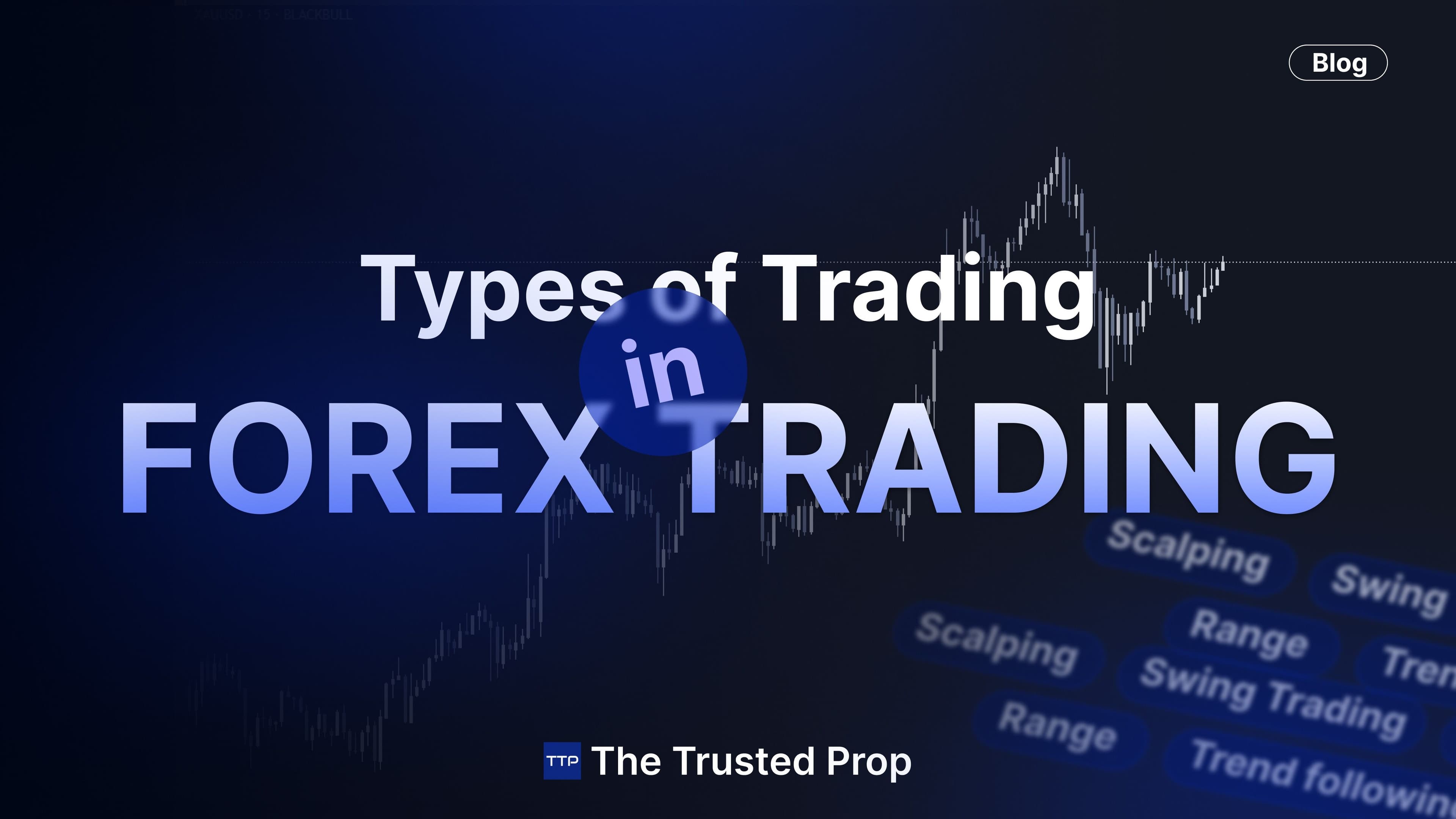Types of trading in Forex trading

Types of trading in Forex trading
3/5/2025
Forex trading is the exchange and sale of currency pairs for profit in the foreign exchange market based on price changes. Different strategies are used by traders depending on their risk management, knowledge of the market, and style of trading. Knowing the types of forex trading will enable traders to select the most appropriate strategy that suits their financial objectives and time investment.
In this article, we break down the most effective types of forex trading that help you to make decisions
Types of Forex trading
1). Day Trading
In this trading, traders buy and sell financial instruments on the same day. In day trading, traders focus on short-term market movements within a single day.
How it Works: The traders can open and close all their positions before the market closes to avoid overnight risks, as the positions are open for short periods of time. They mainly use candlestick patterns and volume analysis in order to spot entry and exit points and to have more accuracy, Day Traders have also shown interest in recent times Bollinger band, VWAP, and so on. Make a profit by taking advantage of small price movements in a whole day. It’s quite probable that day traders plan to use a short line of a stop loss and consistent profit.
It is best for those traders who can dedicate their time daily to watch charts and other news throughout the day and should use strategies such as stop limit orders and take profits at the first good opportunity. The decision should also be mindful of the presence of support and resistance zones. Example: If the trader wants to buy GBP/USD at the time the London session starts, this is just after a breakout from a combined pattern and sells when the New York session ends.
2). Scalp Trading/Scalping
Through this trading, traders don’t target major profits. Traders enter for a few minutes and seconds in a trade, capture the short moment hit the minor price moments, and try to earn a small profit. Traders who use these strategies are called scalpers. Traders trade several times in a day, i.e. perform more than 40 trades even, while many last just a few seconds or minutes. They use the most common ways, which include tight spreads, fast execution, and high leverage, to make the strategy profitable.
This trading strategy is good for traders with limited time and quick decision-making skills. They often use take-profit and stop-loss orders to manage risk.
For example, traders may place quick buy orders and quick sell orders on USD/JPY when the two sessions overlap between the hours of London and New York when the liquidity is significant.
3). Swing Trading
Swing trading is based on short-to-medium-term price movements over several days up to weeks. There is low risk and less time, and traders use technical analysis to make their decisions and enhance the trade setups too.
Traders use tools like Fibonacci retracements, MACD, and RSI to identify potential pattern reversals.
This trading strategy is good for those traders who can’t spend the whole day watching charts and calibrating themselves; they should consider the take-profit mechanism and the trailing stops to minimize further potential loss. For example: In this particular case, hedgers can consider the script to be a bearish sentiment and carry out a short selling practice for the AUD/USD after seeing the bearish reversal of the price on the daily chart. The time frame is four weeks.
4). News Trading
News trading is a strategy to profit from the tendency to change quickly and unpredictably (volatility) that comes with economic and geopolitical news. Traders observe the economic calendar to find the high-impact times (e.g. central bank announcements, non-farm Payrolls) and trade based on market reaction. The accuracy of political and other news may not be enough. Some traders use the order type of the straddle to catch the prices that are moving in both directions.
Those traders who are up to date with the world news, and have a good reaction time are the best candidates for trading.
Example: When the Federal Reserve announces an interest rate that deviates from market expectations, it causes significant market volatility. News traders can profit from trading major currencies against the dollar during these events. Experienced news traders also consider public sentiment and the risk of fakeouts.
5). Trend trading strategy
Trend trading stands out as a simple favorite in Forex strategy. It involves determining the market’s direction- by taking positions in the direction of the trend until the trend changes. It relies on the current trends in the market.
By using technical indicators like trend lines, the Relative Strength Index (RSI) confirms trends and reduces market risks.
This is good for medium- to long-term horizons investors who prefer fewer trades with maximum returns. Example: Buying EUR/USD at its maximum higher and higher lows and holding on to the position when a significant reversal pattern appears.
Final thought
Every forex trading style has its various types of strengths and weaknesses, and finding the right approach method is based on your risk management, time available, and performance in high-pressure situations, whereas swing trading and trend trading are more suitable for those who like longer holding times. News trading provides scope for high-volatility traders but demands good grasp of economic events. With the mastery of these trading styles and risk management techniques, traders can enhance their success in the forex market.
You may also like
Instant Funding Challenge Rules, Phases & How to Pass 2026

FundedNext Stellar 1 Step Challenge explained 2025 Guide

Blue Guardian Challenge Review 2026: Rules & Fees Explained

Blue Guardian 1 Step Challenge Explained (2026 Guide)

The5ers Rules Explained Hyper Growth vs. High Stakes vs. Bootcamp

The5ers Drawdown Rules: How the 'Daily Pause' vs. 'Stop Out' Works

FORFX Flash Account Review 2026: Profit Split, Rules & Tips

No FAQs are available for this topic yet.
.jpeg&w=3840&q=75)

























